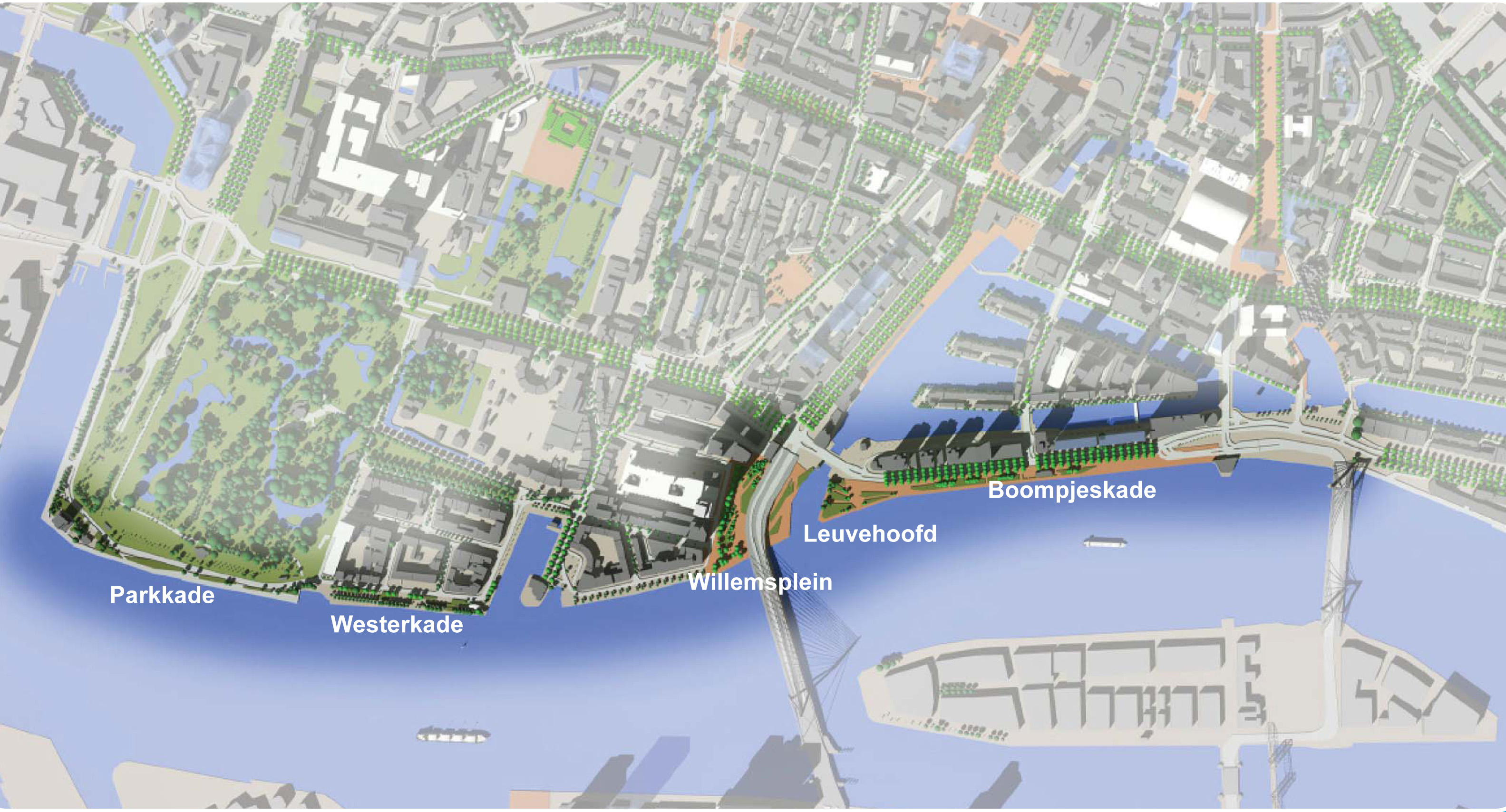
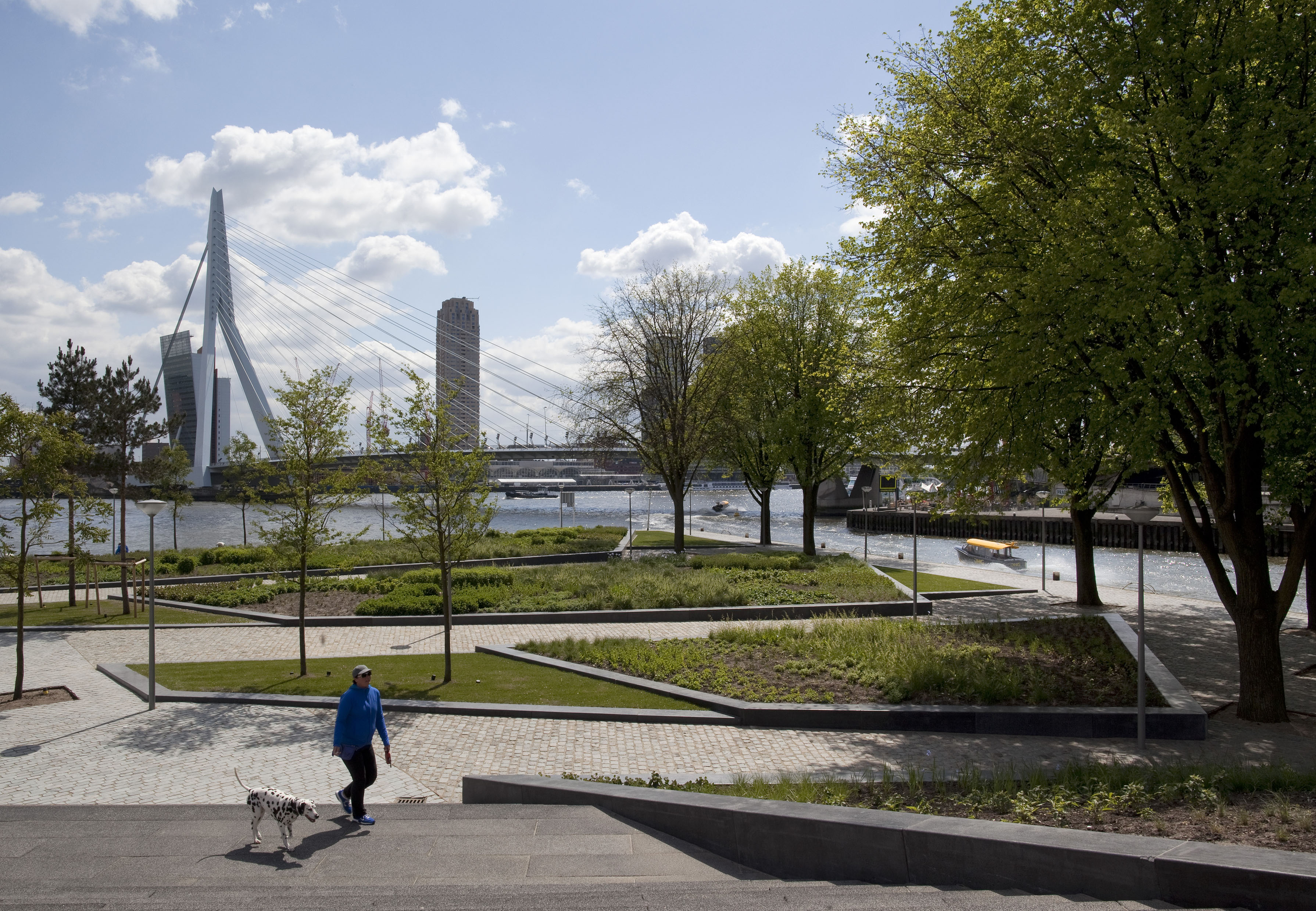
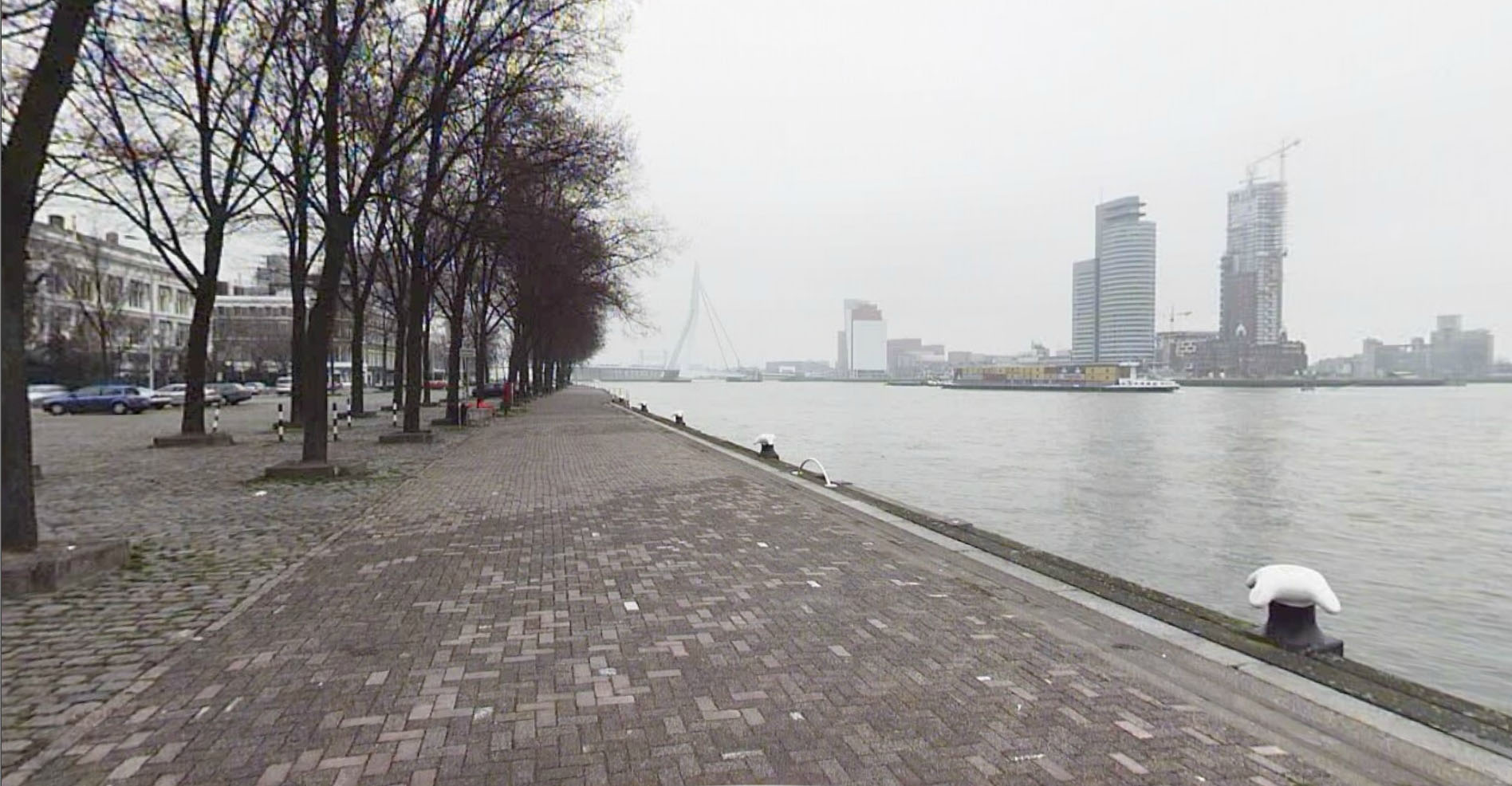
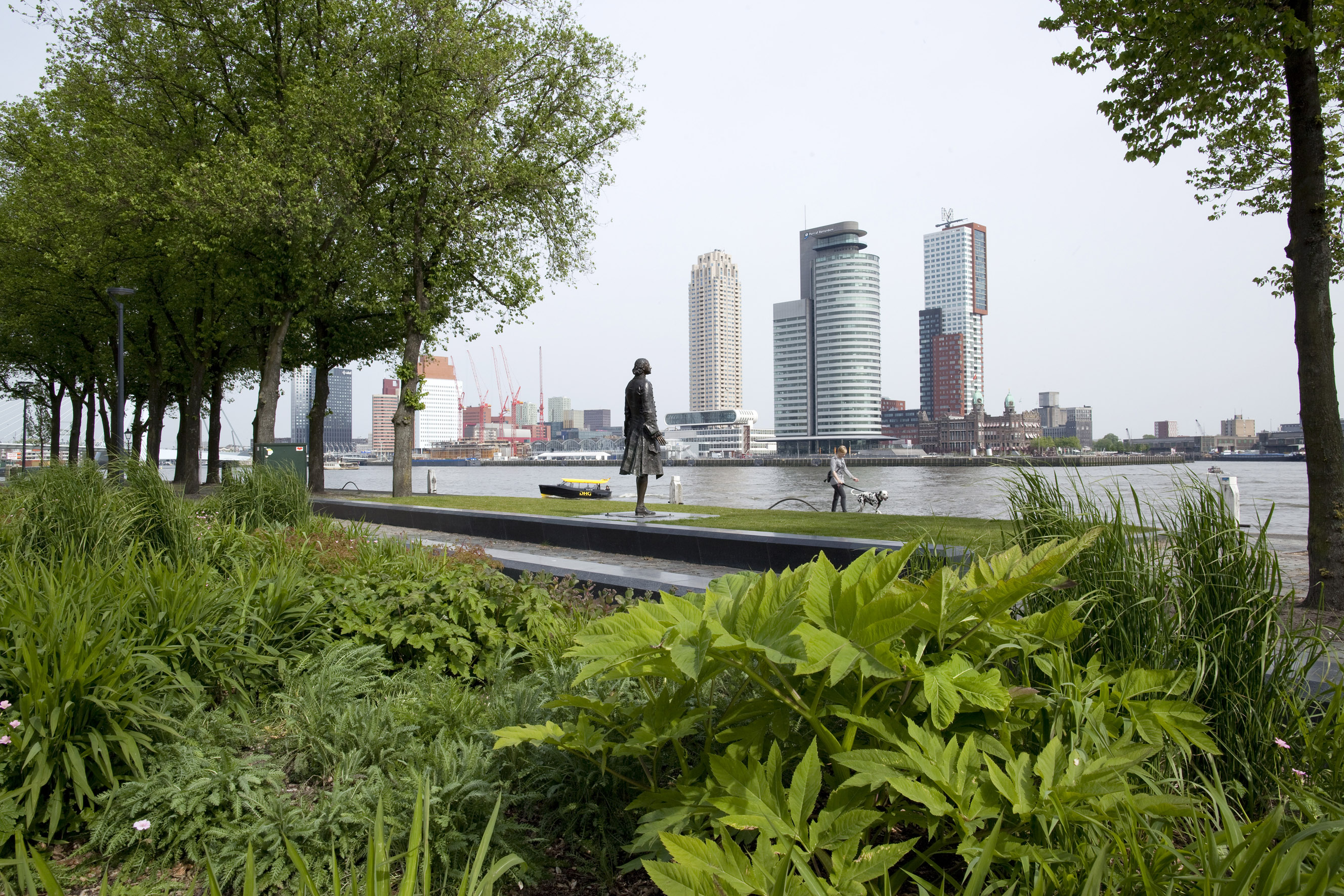
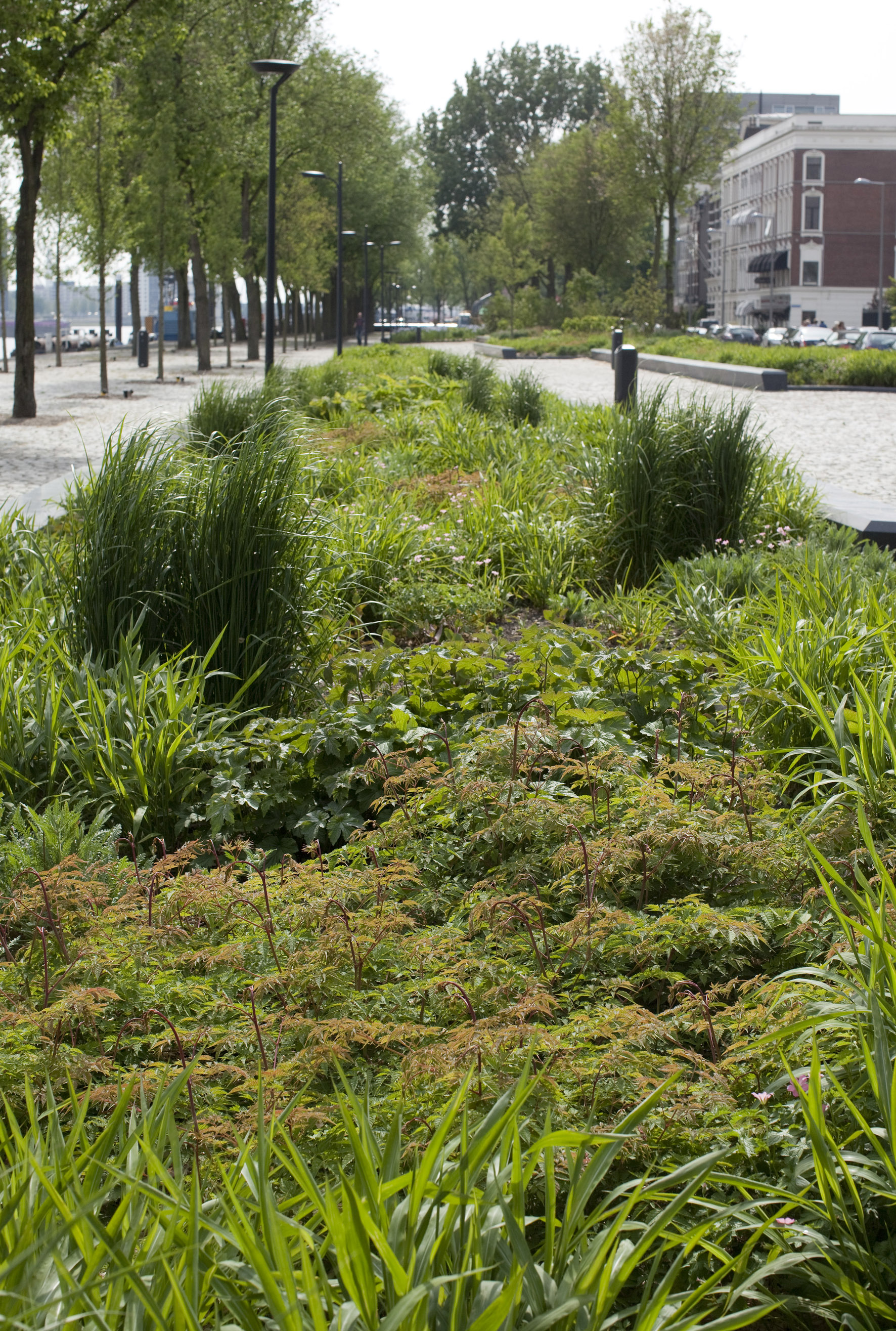
Waterfront Rotterdam, the river as urban landscape for recreation
Previous state
The vast majority of the population now lives in cities. In Rotterdam too, the densification of the city centre is on the agenda. This has made it essential that the city draw up a recognizable plan in order to increase the quality of life and attractiveness of the city for its new and existing residents, visitors and business owners: the city centre as city lounge.
The River Maas, which flows through the city, plays a key role in its transformation, and has a tremendous influence on its social, cultural and economic development. Densification is now going ahead at full steam. Residential tower blocks, with its associated programme, are rising along the Maas.
Until recently, the unique experience of the river could only be enjoyed on the water. Rotterdam had turned its back on the river. Its banks were full of parked cars, obstructing the view to the river, while the Nieuwe Maas is actually the city’s main artery. The riverside areas were unpleasant places to be: stony, windy and featureless.
Over the next few years, the investment in the north banks of the centre, the Waterfront, involves an area covering about 3 kilometres of river banks, from Parkkade to Boompjes. It is one of the key projects that aim to give Rotterdam a cosmopolitan feel and to return the Maas to the city – a transformation of the banks of the Maas in which recreation in a park landscape play a central role.
Intervention
For 4 areas along the waterfront, designs have been finalised. For three of them the construction will be finshed in 2012 . They play a key role to the development of the waterfront.
At Boompjeskade: sloping green lawn areas with various tree groups are introduced. Between the lawn areas, steps bridge the height differences. In the evenings the steps are illuminated. The area is set up in such a way that it can accommodate large-scale events as well as an intensive water programme.
Leuvehoofd has been transformed into a park-like space linked to the monument ‘de Boeg’ The colourful landscaping plan by Piet Oudolf makes it a highly popular hang-out: the place to watch boats glide by and to admire the Erasmus Bridge.
The urban conservation area of the Scheepvaartkwartier with its stately houses and front gardens forms the backdrop here. Along Westerkade a landscape of raised green areas has been created. These raised areas contain beds of shrubs and groundcovers designed by Piet Oudolf, with terraces in-between. Along the riverside, there is a continuous row of elms, a tree synonymous with river landscapes. Long benches provide for seating area along the river.
In the near future, the Parkkade will remain in use by coastal trading vessels. The design takes this into account by introducing tree groups alternated by large, flower-covered lawns where people can lie about along the water, against the lush background: the balcony of Het Park.
Evaluation T
The combination of recreation in a park-like setting has a positive effect on the quality of life for Rotterdammers and visitors.
In addition, the Waterfront is also a meeting place. Until now, visitors come to the waterfront only about three times a year during the big festivals. In future, the Waterfront will be a year round attraction.
The ever-expanding network over the water (recreational and functional) confirms the importance of the river to the city. Water taxis, ferries and water buses have become well-established. In addition, the SS Rotterdam and the Spido are proof of the recreational value of the river to Rotterdam.
BOOMPJESKADE –Sturdy urban waterfront
Rotterdam Municipality in collaboration with Piet Oudolf
Construction of the Boompjeskade project will be finished in 2012. The plan foresees a series of sloping green lawn areas with a number of tree groups. Between the grass areas, steps are introduced to bridge the height differences. In the evenings these steps are illuminated. The area will retain its multifunctional character, where possible this will be reinforced. The area will be set up in such a way that it can accommodate large-scale events as well as an intensive water programme. The park-like setting will offer the user a recreational setting all year round.
LEUVEHOOFD - green pearl along the Maas
Rotterdam Municipality in collaboration with Piet Oudolf
Leuvehoofd has been completed in 2011. The place has been transformed into a park-like space linked to the monument ‘de Boeg’. The project’s design ties in with the Erasmus Bridge and the monument. The unusual, colourful landscaping plan by Piet Oudolf makes it a highly popular hang-out: the place to watch the boats glide by and to admire the Erasmus Bridge.
WESTERKADE – maritime panorama
OKRA landschapsarchitecten bv in collaboration with Piet Oudolf
Westerkade has been completed in 2011. The urban conservation area of the Scheepvaartkwartier with its stately houses and front gardens forms the backdrop here. Next to it, a landscape of raised green areas has been created, smaller in size and scale than on the Parkkade. These raised areas contain beds with shrubs and groundcovers designed by Piet Oudolf, with terraces in-between. Along the riverside, there is a continuous row of elms, a tree synonymous with river landscapes. Long benches make it possible to sit along the water.
| Tipologia | Espai fluvial |
| Promoció | P?ca |
| Localització | South Holland, Rotterdam, Països Baixos |
| Àrea | 37000 m² |
| Cost | 210 €/m² |
| Any inici | 2012 |
| Any finalització | 2012 |